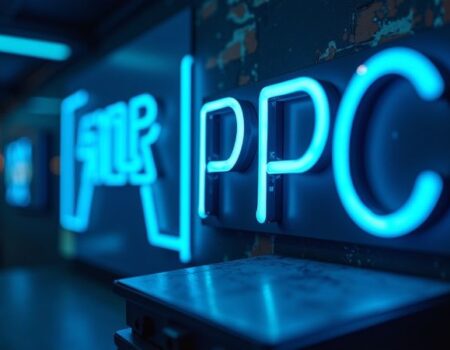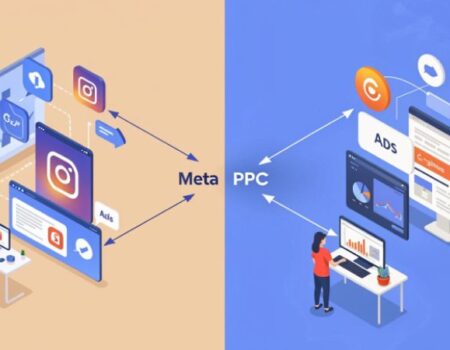9 Most Important PPC Metrics You Should Track & Learn How to Optimize Them!
Pay-per-click advertising is a powerful tool for driving targeted traffic to your website, but determining which metrics to track can be challenging—especially for beginners. Focusing on the right metrics is crucial to optimizing your campaigns and achieving better results.
This post will guide you through the essential PPC metrics to track when running Google search ads. Whether you aim to boost click-through rates, maximize conversions, or reduce cost per acquisition, understanding these metrics will help you make informed decisions and fine-tune your campaigns for success.
We’ll cover key performance indicators such as click-through rate (CTR), cost per click (CPC), conversion rate, quality score, and return on ad spend (ROAS). Additionally, we’ll discuss how to analyze the data and gain insights that can lead to more efficient ad spend and improved campaign outcomes.
By tracking these metrics effectively, you can make data-driven adjustments to your strategy and maximize your PPC results.
What Are PPC Metrics?
PPC metrics are measurable data points that evaluate the performance of your pay-per-click advertising campaigns. These metrics provide valuable insights into what’s working well and where improvements are needed, helping you identify strengths and weaknesses in your strategy.
Monitoring these metrics closely enables you to make informed decisions and fine-tune your PPC strategy for better results. By analyzing data like click-through rates, cost per click, and conversion rates, you can optimize your campaigns to drive more targeted traffic and maximize your return on investment.
Now, let’s dive into the most important PPC metrics you should track!
1. Ad Position
Ad position indicates where your ads appear on the search results page when they’re displayed. Lower numbers, like 1 or 2, represent top-of-page placements, while higher numbers indicate lower positions.
Google determines your ad position through an auction process considering several factors, including bid amount, ad quality, and relevance to the user’s search query. Ads that perform well in these areas are more likely to achieve higher positions in the search results.
To evaluate how prominently your ads appear, Google Ads offers two key metrics:
- Search Top Impression Rate: The percentage of your ads that appear among the top positions on the search results page.
- Search Absolute Top Impression Rate: The percentage of your ads that appear as the very first ad among the top positions.
Observing ad position metrics allows you to optimize your bidding and ad quality for better visibility and improved campaign results.
How to Optimize Ad Positions:
Boosting your ad positions can significantly improve visibility and click-through rates. Here are some strategies to help you secure better placements:
- Enhance Ad Relevance: Ad copy should closely match the intent behind your target keywords. Craft compelling, relevant messages that resonate with users’ search queries to improve ad quality.
- Use Ad Assets: Maximize engagement by incorporating ad assets (previously known as extensions) like site links, call buttons and location information. These additions make your ads more informative and interactive, increasing their appeal.
- Increase Bid Amounts: Raising your bid can improve your chances of better placements in competitive auctions. Evaluate your budget and bidding strategy to stay competitive without overspending.
2. Quality Score
Quality Score is a Google Ads metric that evaluates the quality and relevance of your keywords, ads, and landing pages. It’s measured on a scale from 1 to 10, with 10 representing the highest possible quality.
Google calculates your Quality Score based on three key factors:
- Expected CTR: The likelihood that users will click on your ad when it appears.
- Ad Relevance: How closely your ad’s content and keywords align with what users are searching for.
- Landing Page Relevance: The usefulness, relevance, and ease of navigation of your landing page for users who click your ad.
You can view your Quality Score for each targeted keyword within Google Ads. To check it, go to the left-hand menu, click the “Audiences, keywords, and content” drop-down, and select “Search keywords.”
Monitoring and improving your Quality Score can lead to lower ad costs and higher ad placements, making it a crucial metric to track.
Why It Matters:
Tracking Quality Score is essential because it directly impacts your ad placement and costs within Google’s search results. A high-quality Score indicates that your ads are highly relevant and likely to perform well, which can lead to better ad placements and lower costs per click.
Google prioritizes showing users the most relevant ads possible, so when your Quality Score is high, it means your ad content, keywords, and landing pages are well-aligned with user intent. This alignment increases the chances of your ad appearing in prominent positions without significantly raising your budget.
Conversely, a lower Quality Score suggests that your ads may not fully meet Google’s relevance criteria. As a result, you could pay more for less favorable placements, making your PPC campaigns less cost-effective.
How to Optimize Quality Score
Although Quality Score may not directly impact your ad performance, taking steps to improve it is still beneficial. Here are some effective strategies:
- Enhance the Landing Page Experience: Make sure your landing pages offer high-quality, valuable content that aligns with user expectations. Pages should load quickly, be mobile-friendly, and have intuitive navigation to create a positive visitor experience.
- Improve Ad Relevance: Craft compelling ad copy that directly addresses the search intent behind your target keywords. Use dynamic keyword insertion to automatically include users’ search terms in your ad text, making your ads more relevant and likely to attract clicks.
- Align Keywords, Ads, and Landing Pages: Maintain consistency between your keywords, ad copy, and landing pages. Ensuring that all three elements are aligned boosts relevance and enhances the overall user experience, leading to higher Quality Scores.
3. Click-Through Rate (CTR)
Click-through rate (CTR) measures the percentage of people who click on your ad after seeing it. It’s calculated using the following formula:
CTR = (Total Number of Clicks / Total Number of Impressions) × 100
To find your CTR in Google Ads, navigate to the “Campaigns” report and look for the CTR column.
A high CTR indicates that your ad is relevant and appealing to your target audience. It means that many people who view your ad are intrigued enough to click on it. This demonstrates that your ad copy and keyword choices effectively match user intent.
How to Optimize CTR:
Boosting your CTR can significantly improve your campaign performance. Here are a few practical strategies:
- Refine Your Ad Copy: Create compelling and persuasive ad copy that speaks directly to your target audience. Use action-oriented language and clear calls to action (CTAs) that encourage users to click.
- Align Keywords with Ads: Make sure your ad copy closely matches the keywords you’re targeting. Integrating relevant keywords into your headlines and descriptions helps users quickly identify your ad as relevant to their search queries.
- Incorporate Ad Assets: Enhance your ads by including assets like phone numbers, site links, or location details. Additional engagement options can increase CTR by making your ad more informative and appealing.
4. Impressions
Impressions measure how often your PPC ads are displayed to users, regardless of whether they get clicked. They provide an overall sense of your ads’ visibility within search results.
Generally, higher impressions correlate with better ad positioning, indicating that your ads appear frequently and prominently. This increased visibility enhances the likelihood of users taking action.
How to Optimize Impressions
Maximizing impressions can help boost your ad visibility and audience reach. Here are a few strategies to consider:
- Expand Your Keyword List: Conduct thorough keyword research to identify additional relevant keywords for your campaign. Targeting more keywords increases your chances of appearing in more search queries.
- Adjust Your Ad Scheduling: Analyze your “Ads schedule” report in Google Ads to determine when your audience is most active. Schedule your ads to run during these high-performance periods to maximize impressions.
- Increase Bids for High-Performing Keywords: Raising your bids for keywords that consistently perform well can help secure higher placements in ad auctions, leading to increased impressions.
5. Conversion Rate
Conversion rate measures the percentage of users who complete a desired action—like making a purchase or filling out a form—after clicking on your ads. It reflects how effectively your campaign turns clicks into valuable outcomes.
The formula for calculating the conversion rate is:
Conversion Rate = (Total Conversions / Total Clicks) x 100
A high conversion rate indicates that your landing page and offer are resonating with your audience, while a low conversion rate might suggest a disconnect between ad content and visitor expectations.
How to Optimize Conversion Rate:
Improving your conversion rate can significantly boost your campaign’s success. Try implementing these strategies:
- Enhance Landing Page Relevance: Make sure your landing page content aligns with the messages and keywords in your ads. This helps maintain user interest and reduces bounce rates.
- Simplify User Experience: Ensure your landing page is fast, easy to navigate, and free from unnecessary distractions. A streamlined layout encourages users to complete the desired action.
- Use Strong CTAs: Craft clear, compelling calls to action that guide visitors toward the next step. Make it evident and enticing to boost engagement.
6. Cost Per Click
Cost per click (CPC) is the average amount you pay each time someone clicks on your ad. It’s a vital metric for managing your budget and determining the cost-effectiveness of your campaigns.
The formula to calculate CPC is:
CPC = Total Cost of Clicks / Total Number of Clicks
You can easily view your average CPC on the “Campaigns” dashboard within Google Ads.
Tracking your CPC helps you understand how much you spend attracting each new visitor. This insight lets you make informed decisions about your bidding strategy, helping you maximize your return on investment.
How to Optimize CPC:
Here are some practical strategies to help you achieve a lower CPC:
- Enhance Ad Quality: Google often rewards ads that offer a great user experience with reduced costs. To minimize your CPC, focus on creating relevant, well-structured ads.
- Target Long-Tail Keywords: Long-tail keywords are more specific and typically less competitive than broad terms. Bidding on phrases like “women’s running shoes” rather than just “shoes” can lower costs while attracting more qualified traffic.
- Implement Negative Keywords: Use negative keywords to filter out irrelevant searches. This strategy helps prevent ads from appearing for unrelated queries, saving you money on unnecessary clicks.
7. Return on Ad Spend
Return on ad spend (ROAS) measures how much revenue your PPC campaigns generate for every dollar spent. It’s a crucial metric that helps you assess the profitability of your advertising efforts.
To calculate ROAS as a percentage, use the formula: ROAS = (Total Ad Revenue / Total Ad Spend) x 100
ROAS provides valuable insight into which campaigns are yielding the best returns. By tracking this metric, you can allocate your budget more effectively and focus on maximizing profitability.
How to Optimize ROAS
Here are some strategies to boost your ROAS:
- Focus on High-Performing Keywords: Allocate a higher budget to keywords that consistently deliver revenue. Pause or minimize spending on underperforming keywords to maximize your budget.
- Adjust Ad Scheduling: Review historical performance data to determine when conversions are most likely to happen. Then, optimize your ad scheduling to target those high-conversion times.
- Improve Landing Page Experience: Make landing pages as user-friendly and conversion-oriented as possible. Streamline checkout processes, provide multiple payment options, and enhance visuals and descriptions to boost engagement and sales.
8. Cost Per Action
Cost per action (CPA) measures the average cost of achieving a conversion through your PPC campaigns. It’s an essential metric for understanding how efficiently your ads generate desired actions, like purchases or sign-ups.
The formula to calculate CPA is: CPA = (Total Ad Spend / Total Number of Conversions)
A lower CPA indicates that your campaign is cost-effective, while a higher CPA could signal that you need to do PPC Campaign Optimization. Monitoring CPA regularly helps you assess whether your campaigns are delivering value for your ad spend.
How to Optimize CPA:
Here are some practical ways to lower your CPA:
- Enhance Audience Targeting: Refine your targeting settings to focus on users most likely to convert. Adjust demographic filters, interests, and behaviors to reach a more qualified audience. Running remarketing campaigns can also help recapture potential customers who previously interacted with your site.
- Leverage Automated Bidding: Use automated bidding strategies like Target CPA in Google Ads to maximize conversions at a set cost. These strategies adjust your bids in real time, helping you achieve your desired CPA with minimal manual effort.
- Boost Ad and Landing Page Quality: Create high-quality, relevant ads that align with your landing page content. Ensure that both elements are compelling and user-friendly to encourage conversions and ultimately reduce your CPA.
9. Bounce Rate
The bounce rate represents the percentage of unengaged sessions on your PPC landing page. It measures how many visitors leave your page without taking action, such as converting, staying for at least 10 seconds, or navigating to another page on your site.
Here’s the formula to calculate the bounce rate: Bounce Rate = (Number of Unengaged Sessions / Total Number of Sessions) × 100
A high bounce rate might indicate that your landing page is not meeting user expectations. This could be due to mismatched messaging between your ad and landing page, poor design, slow loading times, or unappealing calls to action.
How to Optimize Bounce Rate
Here are some ways to lower your bounce rates and keep visitors engaged:
- Enhance Relevance: Ensure your landing pages align closely with your ad promises and user intent. Visitors should feel that the page content directly answers their needs or queries.
- Optimize Design and Speed: Create a clean, visually appealing design that loads quickly. Compress images, streamline code, and minimize heavy elements to improve load times.
- Ensure Cross-Device Compatibility: Your landing pages should be fully responsive, providing a smooth experience on desktops, tablets, and mobile devices. A seamless user experience across platforms can significantly reduce bounce rates.
Partner with our Digital Marketing Agency
Ask Engage Coders to create a comprehensive and inclusive digital marketing plan that takes your business to new heights.
Contact Us
Conclusion
Mastering PPC metrics like Quality Score, Ad Position, CTR, Impressions, Conversion Rate, CPC, ROAS, CPA, and Bounce Rate is essential for running successful paid campaigns. Each metric offers valuable insights into how your ads are performing and where improvements can be made. Optimizing these metrics not only maximizes your ad spend but also enhances the overall effectiveness of your campaigns.
But navigating the complexities of PPC management can be overwhelming. That’s where Engage Coders comes in. Our PPC Management Services are designed to take the guesswork out of digital advertising. We analyze your campaigns, optimize every metric, and craft strategies that deliver the best results. Whether you’re aiming to boost CTR, reduce CPA, or maximize ROAS, we have the expertise to help you succeed.
Ready to transform your PPC performance? Partner with Engage Coders today!








